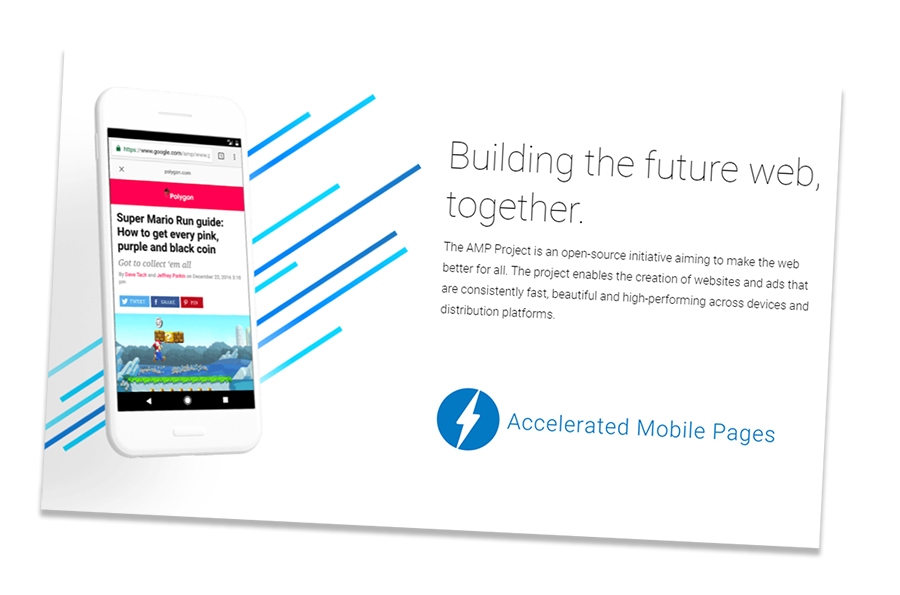Insights

AMP - Accelerated Mobile Pages
The Accelerated Mobile Pages Project (AMP) led by Google is an open-source website publishing technology designed to improve the performance of web content and advertisements.
More than ever, we use our smartphones and mobile devices to discover and digest news, read content and find fresh, interesting information on the web. We carry the internet with us in our pockets. This convenience is restricted by the current state of the mobile web experience, which is hindered by slow performance.
AMP optimises your pages for the mobile web
Benefits are:
- Super fast mobile page loading times
- Increased font sizes
- Better user experience
- Increases mobile ranking in search engines
Details at the www.ampproject.org
The AMP Design Principles
These design principles are meant to guide the ongoing design and development of AMP. They should help us make internally consistent decisions.
ANP is an open-source library that provides a straightforward way to create web pages that are compelling, smooth, and load near instantaneously for users.
User Experience, Developer Experience and Ease of Implementation.
When in doubt, do what’s best for the end user experience, even if it means that it’s harder for the page creator to build or for the library developer to implement.
Don’t design for a hypothetical faster future browser.
We’ve chosen to build AMP as a library in the spirit of the EXTENSIBLE WEB MANIFESTO to be able to fix the web of today, not the web of tomorrow. AMP should be fast in today's browsers.
Don’t break the web.
Ensure that if AMP has outages or problems it doesn’t hurt the rest of the web. That means if the Google AMP Cache, the URL API or the library fails it should be possible for websites and consumption apps to gracefully degrade. If something works with an AMP cache it should also work without a cache.
Solve problems on the right layer.
E.g. don’t integrate things on the client side, just because that is easier, when the user experience would be better with a server side integration.
Only do things if they can be made fast.
Don’t introduce components or features to AMP that can’t reliably run at 60fps or hinder the instant load experience on today’s most common mobile devices.
Prioritise things that improve the user experience – but compromise when needed.
Some things can be made fast and are still a terrible user experience. AMPs should deliver a fantastic user experience and speed is just one part of that. Only compromise when lack of support for something would stop AMP from being widely used and deployed.
No whitelists.
We won’t give any special treatment to specific sites, domains or origins except where needed for security or performance reasons.
AMP pages are built with 3 core components:
AMP HTML
AMP HTML is HTML with some restrictions for reliable performance.
AMP JS
The AMP JS library ensures the fast rendering of AMP HTML pages.
AMP Cache
The Google AMP Cache can be used to serve cached AMP HTML pages.
AMP by Example
A hands-on introduction to Accelerated Mobile Pages (AMP) focusing on code and live samples. Learn how to create AMP pages and see examples for all AMP components.
AMP Sample Templates
Build responsive, lightning-fast AMP pages with our templates and components
